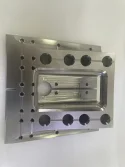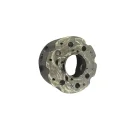2023-12-13
CNC turning machining also known as computer numerically controlled turning, is a machining process that uses computer control to rotate a workpiece while cutting tools remove material to achieve the desired shape. It is a highly accurate and efficient method of manufacturing components with complex geometries such as cylinders, cones, and threads.

In today's fast-paced and competitive market, precision and efficiency are the key factors for the success of manufacturing.
- Accuracy and Consistency: CNC lathes are programmed to perform precise movements, resulting in highly accurate and consistent parts. This eliminates human error and ensures that each component meets the required specifications.
- Versatility: CNC turning can be applied to a wide variety of materials, including metals, plastics, and composites. This versatility enables turned parts manufacturers to create a wide variety of components for different industries, such as automotive, aerospace, medical, and electronics.
- Efficiency and Speed: With the automation and computerized control offered by CNC turning, the manufacturing process becomes faster and more efficient. This increases productivity, shortens lead times, and ultimately improves customer satisfaction.
The CNC turning lathe is an important machine tool that is widely used in the processing of many materials such as metals and plastics. As a turned parts manufacturer, The technological process of our (Shenzhen DMTC Intelligent Technology CO., LTD)
turning processing is as follows:
- Selection of materials: According to the characteristics of the processed parts and the working environment, select suitable materials.
- Cutting: Use a turning tool to cut the material to make it into the desired shape.
- Turning shape: Turning is performed according to the shape and size of the part, and the trajectory and speed of the turning tool are controlled by the spindle and the feed mechanism.
- Turning end face: Use a lathe to rotate the workpiece to complete the end face processing.
What types of parts are suitable for machining by CNC turning?
- Rotationally symmetric parts: CNC turning excels at producing parts with rotational symmetry, such as cylinders, shafts, pins, and bushings. The ability to rotate the workpiece allows for precise machining along an axis, resulting in symmetrical and concentric features.
- Threaded Parts: CNC turning is commonly used to create threaded parts including screws, bolts, and threaded inserts.
- Complex contour parts: Complex contour parts can be produced efficiently with the help of advanced CNC lathes with multi-axis capabilities. These may include parts with complex curves, contours, or features such as grooves and pockets.
- Precision Components: CNC turning is known for its ability to achieve high precision. It is suitable for manufacturing components requiring tight tolerances, such as bearings, gaskets, and precision gears.
It is important to note that the specific design requirements, complexity, and material properties of the component will determine its suitability for CNC turning. By leveraging the benefits of CNC turning, turned parts manufacturer can obtain precision, high-quality parts that meet their application needs.
What should turn parts manufacturers pay attention to the machining?
- Reasonable selection of cutting amount: The user should choose the cutting speed to use according to the material to be processed, hardness, cutting state, material type, feed rate, cutting depth, etc.
- Reasonable choice of knives: When rough turning, it is necessary to choose a tool with high strength and good durability, to meet the requirements of large cutting capacity and large feed rate during rough turning. When finishing cuts, it is necessary to choose a tool with high precision and good durability to ensure the requirements of machining accuracy. To reduce the tool change time and facilitate tool setting, machine-clamped tools, and machine-clamped blades should be used as much as possible.
- Determine the processing route: the processing route refers to the movement trajectory and direction of the tool relative to the part during the machining process of the CNC machine tool.
It’s important to note that every machining project is unique and costs will vary based on factors such as project complexity, volume, and market conditions. As a turned parts manufacturer, we always do effective cost estimating and analysis, along with ongoing process improvement efforts, which can help optimize CNC turning costs and improve overall profitability.












